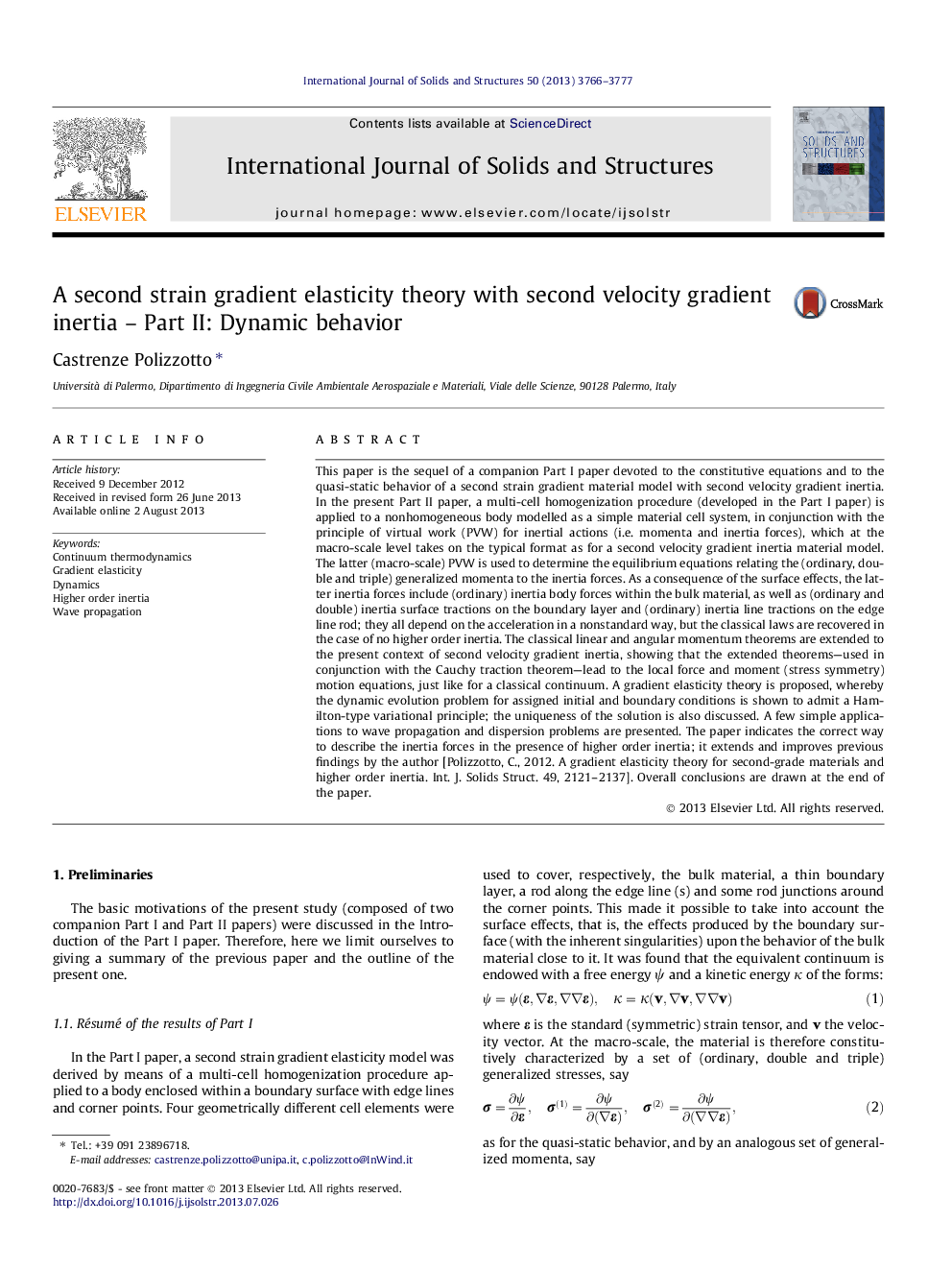| کد مقاله | کد نشریه | سال انتشار | مقاله انگلیسی | نسخه تمام متن |
|---|---|---|---|---|
| 277778 | 1430250 | 2013 | 12 صفحه PDF | دانلود رایگان |

This paper is the sequel of a companion Part I paper devoted to the constitutive equations and to the quasi-static behavior of a second strain gradient material model with second velocity gradient inertia. In the present Part II paper, a multi-cell homogenization procedure (developed in the Part I paper) is applied to a nonhomogeneous body modelled as a simple material cell system, in conjunction with the principle of virtual work (PVW) for inertial actions (i.e. momenta and inertia forces), which at the macro-scale level takes on the typical format as for a second velocity gradient inertia material model. The latter (macro-scale) PVW is used to determine the equilibrium equations relating the (ordinary, double and triple) generalized momenta to the inertia forces. As a consequence of the surface effects, the latter inertia forces include (ordinary) inertia body forces within the bulk material, as well as (ordinary and double) inertia surface tractions on the boundary layer and (ordinary) inertia line tractions on the edge line rod; they all depend on the acceleration in a nonstandard way, but the classical laws are recovered in the case of no higher order inertia. The classical linear and angular momentum theorems are extended to the present context of second velocity gradient inertia, showing that the extended theorems—used in conjunction with the Cauchy traction theorem—lead to the local force and moment (stress symmetry) motion equations, just like for a classical continuum. A gradient elasticity theory is proposed, whereby the dynamic evolution problem for assigned initial and boundary conditions is shown to admit a Hamilton-type variational principle; the uniqueness of the solution is also discussed. A few simple applications to wave propagation and dispersion problems are presented. The paper indicates the correct way to describe the inertia forces in the presence of higher order inertia; it extends and improves previous findings by the author [Polizzotto, C., 2012. A gradient elasticity theory for second-grade materials and higher order inertia. Int. J. Solids Struct. 49, 2121–2137]. Overall conclusions are drawn at the end of the paper.
Journal: International Journal of Solids and Structures - Volume 50, Issue 24, November 2013, Pages 3766–3777